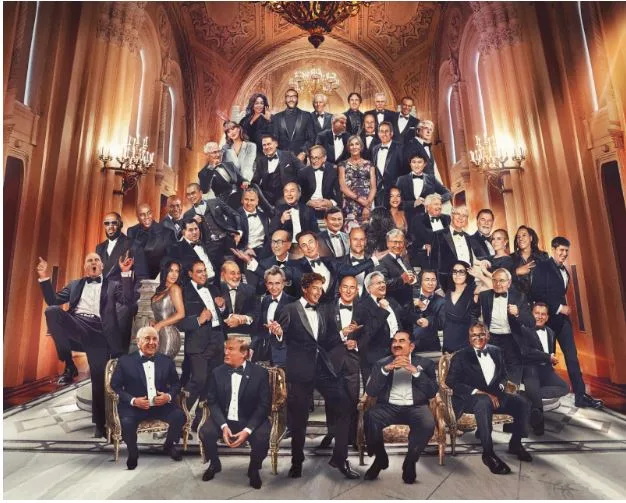Shifts and currents in the realm of the world’s richest women
The global billionaire population has reached unprecedented levels in 2025 — numbering 3,028 individuals. Among them, 406 are women, marking a meaningful transformation in global wealth distribution. Although women still represent a minority, their growing presence signals an important evolution in the dynamics of wealth creation and inheritance. For institutions serving this elite demographic, recognizing how female billionaires differ from their male counterparts — in both origin and outlook — has never been more relevant.
When comparing the profiles of men and women in this stratum, demographic similarities are visible, yet the paths to wealth diverge notably. The median age of female billionaires stands at 67, only slightly younger than that of men. In both groups, most individuals fall between 50 and 70 years of age — the typical span of peak financial maturity.
The most striking gender contrast, however, lies in the source of wealth. Approximately three-quarters of female billionaires have inherited at least part of their fortune, whereas only about one-third of men have done so. The gap widens further among those whose entire wealth is inherited: nearly 38% of the world’s richest women — including figures such as Françoise Bettencourt Meyers, Alice Walton, and Jacqueline Mars — owe their fortunes entirely to inheritance. In contrast, only around 5% of male billionaires fall into the same category.
Amid this backdrop, a new and increasingly influential segment has emerged: self-made female billionaires. These women are not only expanding the ranks of the ultra-wealthy but are also redefining success, entrepreneurship, and influence in modern society. Over the past decade, their numbers have been steadily climbing, reflecting broader cultural shifts and expanding economic opportunities for women globally.
Self-made female billionaires are on average younger — about 64 years old — compared with those who inherited wealth, and they represent a more dynamic and entrepreneurial generation. Fewer than 10% are under 50, yet their age distribution shows a marked generational difference: over half of billionaire heiresses are over 70, while only about a quarter of self-made women are in that age bracket. This underscores a growing transfer of wealth and influence to women who have built their empires independently.
The dominant industries shaping female entrepreneurial wealth mirror those of their male peers: finance, healthcare, consumer goods, technology, and media. Nevertheless, there are remarkable exceptions — such as Elena Baturina in construction and engineering, Qian Jinghong in the automotive industry, and Anna Angelicoussis in logistics — whose achievements highlight the widening diversity of women-led wealth creation.
Another point of distinction lies in how female billionaires engage with philanthropy. The majority of women with inherited fortunes devote substantial time to non-profit and social causes, often focusing on education, health, or equality. Self-made billionaires, on the other hand, typically prioritize building their companies and expanding their commercial reach in earlier years. Yet as their businesses mature, many transition toward philanthropy and advocacy, channeling their resources and experience into broader social impact.
In essence, the ascent of self-made female billionaires represents more than a financial trend — it is a reflection of a shifting global narrative, where women’s roles in wealth creation, innovation, and philanthropy are expanding and reshaping the world’s economic elite.





